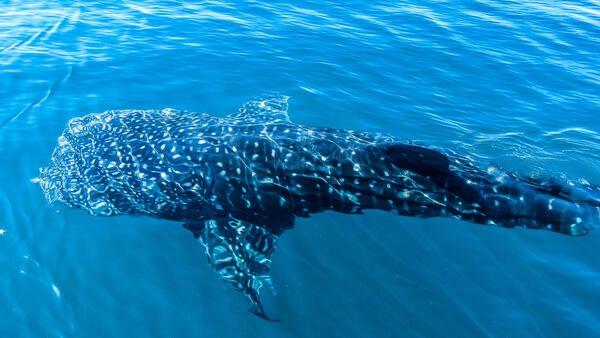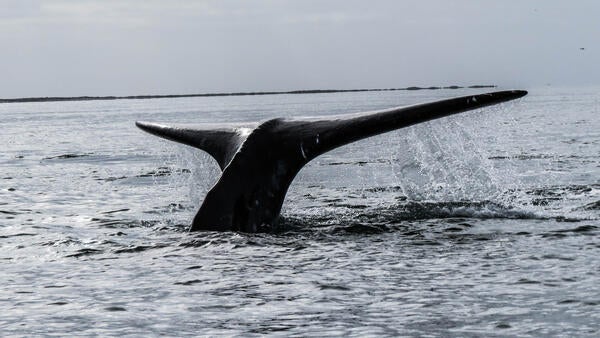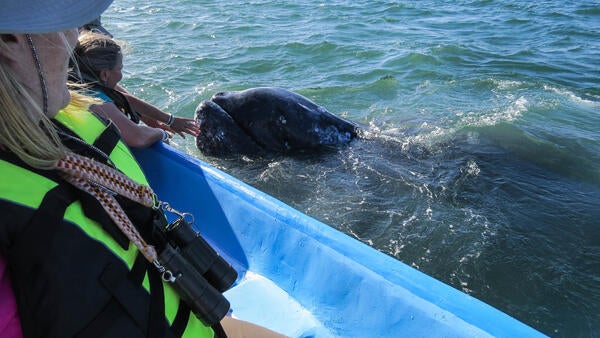What we can learn from Baja California
“The sea, once it casts its spell, holds one in its net of wonder forever.” — Jacques Yves Cousteau
By DR. CAMERON BARROWS
Even more so than the Baja California peninsula itself, the islands in the Gulf of California are a naturalists’ paradise. Each island is populated by a different assemblage of species, and many islands are home to species found nowhere else on earth. An island’s size, its isolation, its position within the gulf, its time since it was connected to the mainland or peninsula – if ever, all provide clues as to who lives there.
As fascinating as those islands are, the sea in which they are embedded is just as fascinating. The Gulf of California is one of the most productive and biologically rich marine ecosystems in the world. The combination of high biological productivity and biological richness characterizing the region is the result of its unique geology and geography, shaping strong currents and tides that generate the upwelling of cool, nutrient-rich waters.
These nutrients support an extremely high abundance of plankton that in turn are the basis of a complex food web sustaining a diversity of fish, birds, and marine mammals. Some of those fish and mammals are among the largest creatures on our planet. Moving between islands it is not uncommon to see humpback whales and fin whales, which are second only to blue whales as the largest on earth. Blue whales are there as well, although rarely seen. Also found there is the largest fish that currently exists in our seas, the whale shark, called tiburón ballena by the locals.
A few years ago, Katie and I were down in La Paz, in Baja California Sur. We hired a local tour company to drop us off so we could explore Isla Espiritu Santo. Along with us were a handful of other gringos from around the world that were going out to swim with sea lions. Before we even left the bay, the guides asked if we would like to swim with a whale shark. The answer was of course a resounding yes. The small boat took a short detour, and the guides said get ready to get in the water. It was hard to see what the guides were seeing, but all of a sudden, they said get in the water, now! At first all I could see was empty water, but soon a large shadow formed in front of me. The guides had told us that we were not to touch the whale shark, and especially not to get within a meter or so of its head. So, as this shadow began to take form, it was clear that it was coming directly at me. I tried to back up and realized the rest of the tourists were all right behind me, using me as their safety barrier. I couldn’t move. I had to remind myself that whale sharks only eat plankton as this amazing creature with a mouth wide enough to swallow me whole approached within just a couple feet of me. This was a baby, but still easily over 30 feet long. Its eye was as big as a baseball, or bigger, and we had “a moment” as its eye moved past me, less than a foot from my face. The shark made no effort to avoid us, but neither was it in any way aggressive. Perhaps when you are that big there is nothing to fear. Or, perhaps it was curious as to see what these ungainly, fin-less, gill-less creatures were doing in its domain.
On the western edge of the Baja California peninsula, abutting the Pacific Ocean, there are a couple special lagoons. One is Scammon’s Lagoon; the other is Laguna San Ignacio. These lagoons are where gray whales come to give birth. Gray whales migrate up the western coast of North America in the spring to feed on amphipod crustaceans, where they can find concentrations of 12,000 to 20,000 amphipods per square yard in the southern Chukchi Sea and northern Bering Sea. Then in the fall they head south to the warmer waters of Baja California where the females give birth.
Gray whales, along with most other whale species, were nearly hunted to extinction less than a century ago. Charles Melville Scammon (1825–1911) was a 19th-century whaler, naturalist, and author. He was the first to hunt the gray whales of both Laguna Ojo de Liebre, also known as "Scammon's Lagoon" after him, and San Ignacio Lagoon. In 1874 he wrote the book The Marine Mammals of the North-western Coast of North America, considered a classic account of whales and whaling during that era. He first hunted the gray whales of Laguna Ojo de Liebre, catching twenty. The following winter (1858–59), he returned to the lagoon, catching forty-seven cows. In the winter of 1859–60 he exploited another lagoon to the south, San Ignacio. Within a few seasons it had been “swept clean” of whales.
Fortunately, Scammon and others stopped short of causing the total extinction of these whales. In the mid-1900s people noticed that a few gray whales were returning to these lagoons. Slowly, each year their numbers grew. Scientists monitoring the whales’ recovery heard about something odd from local fishermen. When the researchers were out in the lagoon in a small boat, one of the whales would occasionally approach them, and apparently more than once rise up under their boat and lift it out of the water, and then gently let it down. I can imagine that the researchers were quite unsure as to what was happening and whether the whale was acting aggressively or with curiosity. Over the coming years a few more whales joined in this behavior, and were named by the researchers as “friendly whales.” These whales had every reason to fear humans, or even in Moby Dick-like fashion take retribution for the slaughter we humans had wreaked upon them, yet some of them chose a different type of interaction.
Flipping the calendar to the present, there are more and more “friendly whales” occupying both lagoons. Local entrepreneurs have created an “ecotourism” industry, taking people out in small boats called pangas to interact with friendly whales. These interactions are under very tight restrictions and supervision by Mexico’s wildlife officials. The interactions are only allowed in a small area comprising maybe the size of a couple football fields, a very small fraction of the entire lagoon, and only a handful of boats are allowed in that area at a time. Once in that area the boat drivers are not allowed to approach or chase whales; they simply let the boat drift and the whales either approach or don’t.
Again, a few years ago, Katie and I along with some friends drove down to Laguna San Ignacio to experience this ourselves. Hopeful, but not expecting too much, we hired a licensed panga and driver and we entered the designated area of the lagoon. At first nothing happened. We could see whales in the area, and some were interacting with other pangas, but we were being ignored. Then an adult female came up to our panga and rested her nose on the gunnel or edge of the panga, allowing us all to touch, rub, and even kiss her. She did this repeatedly. Later a mother and her young calf approached. The calf was not sure what to do, but her mom dove below it and pushed it close to our panga and we all interacted.
I was profoundly impacted by this experience. These intelligent and huge animals were making individual choices to interact with humans in the most positive way they could. These were not trained whales; they did not receive any food reward for interacting with us. They were making an active choice to make friends with creatures whose species had viciously slaughtered them to near extinction less than a century before. They could have easily, by accident or choice, swamped our panga, yet their interactions were both gentle and purposeful. We have so much to learn from other creatures, about how to live together on this one small planet.
Nullius in verba
Go outside, tip your hat to a chuckwalla (and a cactus), think like a mountain, and be safe.


